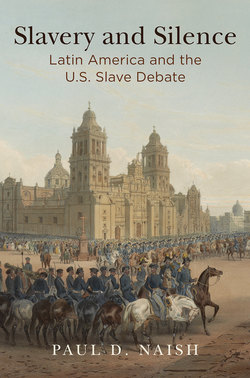Slavery and Silence

Реклама. ООО «ЛитРес», ИНН: 7719571260.
Оглавление
Paul D. Naish. Slavery and Silence
Отрывок из книги
SLAVERY AND SILENCE
LATIN AMERICA AND THE U.S. SLAVE DEBATE
.....
Churches refrained from endorsing antislavery activities or declaring slavery a sin, fearful of driving congregants away and discouraging fundraising.65 Anna Quincy Thaxter Cushing, a comfortably situated doctor’s wife of Dorchester, Massachusetts, generally attended the First Church (Unitarian) twice on Sundays, hearing one sermon “in the forenoon” and another in the afternoon, the topics of which she dutifully noted in her diary. In August 1855 a sermon by a visiting divine stirred up trouble in the congregation. “Mr. Fred. Frothingham, of Montreal, … introduced the subject of slavery by way of illustrating the subject about which he was speaking, and spoke of it at some length,” wrote Cushing that Sunday; “some twenty people saw fit to leave the church. A very undignified and illbred proceeding, to say no more.” Congregants demanded whether the pastor had known what the visiting clergyman had planned to say: “some of his friends, most of them, probably, think that it will be better to let the whole affair pass over in silence,” wrote Cushing—which is apparently exactly what happened.66
Sometimes silence on the subject of slavery signaled the despair Americans felt at the possibility of ever finding a remedy. Harriet Beecher Stowe, of all people (referring to herself in the third person), was later to recall, “It was a sort of general impression upon her mind, as upon that of many humane people in those days, that the subject was so dark and painful a one, so involved in difficulty and obscurity, so utterly beyond human hope or help, that it was of no use to read, or think, or distress oneself about it.”67 Stowe ultimately decided there was something she could do, and almost singlehandedly piloted the subject of U.S. slavery to the foreground of mainstream fiction in 1852 with the publication of Uncle Tom’s Cabin. But before she put slavery front and center in her bestselling novel, most American literature aiming at a national audience kept slave characters on the periphery in the “plantation novel” tradition, where they bowed to their masters and joked merrily with each other.
.....